You may have heard of people having their tires filled with foam and wondered – can you foam fill your tires? The answer is yes, you can! And in this blog post, we are going to tell you how.
Can You Use Shoe Polish on Tires?
Please enable JavaScript
Can You Use Shoe Polish on Tires?
Foam filling your tires comes in a few different variations and it is important to know what the differences are before you attempt to foam fill your tires. So if you are interested in learning more about foam filling your tires, keep reading!
Yes, filling your tires with foam can provide benefits to your vehicle. Foam filling your own tires is a job that we would recommend your local shop assist you with, as it will require you to remove the tire from the rim to insert the foam and then mount the tire again.
While this can be done at home, it is a difficult job without the proper machinery. For this reason, we would recommend bringing your car to a professional to have this done.
Foam filled tires have been gaining in popularity and many tire manufacturers have recently discovered the benefits of selling tires that are filled with foam.
There are currently 2 different methods of foam filling tires.
The first is where a special layer of polyurethane foam is placed inside the tire.
The second method is where the polyurethane foam is injected into the tire.
Both of these have different uses and benefits. The main benefits include reduced road noise and vibrations inside the cabin, as well as ease of use.
For heavy duty machinery, having foam filled tires helps prevent the tire from being susceptible to punctures and reduce down time to repair any tire related issues from being used on a construction site.
If you are considering foam filling your tires for road vehicles, you will be looking at inserting a layer of polyurethane foam into the tire.
This internal layer of foam has also been called “internal acoustic foam“ as its main benefits include a quieter and more comfortable ride. They achieve this by absorbing vibrations that come from the road.
Manufacturer such as Continental and Pirelli have been using this technology for years in their tires and have seen great success. Their foam filled tires have proven especially popular with electric and hybrid models of cars and now come as standard on new Teslas.
This is because electric and hybrid cars offer a quiet ride due to the fact that they have no engine, and therefore the addition of foam filled tires helps to reduce road noise from the tires intruding into the cabin by up to 10dB. This means that foam filled tires can reduce noise by around 15% on average!
As well as reducing noise, foam filled tires also popular as they do not intrude or impact the vehicles driving performance
in any way. This is because the foam filling does not change the tires weight, rolling resistance or contact patch and require no upkeep.
This is because the foam filling does not change the tires weight, rolling resistance or contact patch and require no upkeep.
The tire remains a pneumatic tire and the foam is an additional layer that does not interfere with the tires workings.
There are very few downsides to foam filling your tires. The first downside is the small premium you will have to pay to have this done. This is usually around $30-40 extra per tire. However, we believe that the benefits of a quieter and more comfortable ride are well worth it!
And finally there have been occasions where the layer of foam manages to detach itself from the inside of the tire and is able to freely move around inside your tire. However this is extremely rare and only happens if the tire pressure is not maintained or if there are any punctures in the tire.
If this happens,
it is not dangerous and you will be able to continue driving as normal. The only downside is that your ride quality will be reduced until you are able to have the tire repaired.
The only downside is that your ride quality will be reduced until you are able to have the tire repaired.
This is also an easy repair with minimal costs and a mechanic will use glue to stick the foam back in place. The cost for this and re-mounting the tire should come out to around $30 plus taxes.
If you are looking at foam filling your tires for construction vehicles, you will be looking at the option of injecting polyurethane foam into the tire. This is done through the use of a machine that will inject the foam into the tire.
The main benefit to using foam in construction vehicles is that it helps to prevent punctures. This is different from road going foam filled tires which still remain pneumatic as the tires used on construction sites are completely filled with foam and no air remains inside them.
It also means that the tire is no longer susceptible to blow outs which can be extremely dangerous. Solid rubber tires are also an alternative option to foam filled tires that fulfil the same purpose.
Solid rubber tires are also an alternative option to foam filled tires that fulfil the same purpose.
Therefore the foam filled tires of large construction vehicles helps to support the tire and therefore if there is any sharp objects on the ground, even if it does puncture the tire, the tire will not deflate and the vehicle can continue to be driven.
This is of enormous benefit to those working on construction sites as it helps to avoid any downtime and delays that would otherwise be caused by a puncture.
The only downside to construction vehicle foam filled tires is the cost. The machine that is needed to inject the foam into the tire is not cheap and therefore it can be quite an investment to get started.
Additionally, the tires themselves are more expensive than regular pneumatic construction vehicle tires. However, the benefits of having a tire that cannot be punctured min most cases outweigh the cost for many construction companies.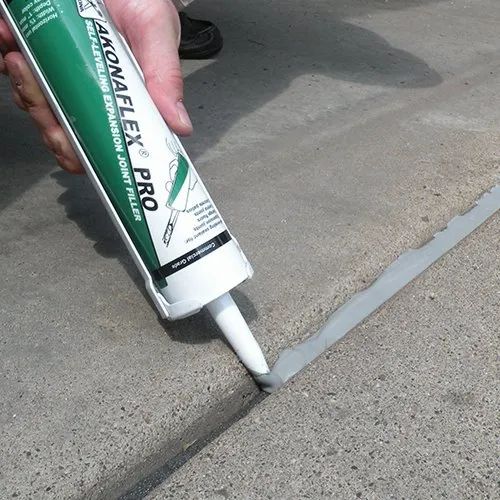 This makes them popular with all vehicles on a construction site including skid steer vehicles.
This makes them popular with all vehicles on a construction site including skid steer vehicles.
While adding a layer of foam is perfectly safe to add to road going vehicles tires, filling them completely with foam is not recommended or common practice. This is because replacing all the air inside a tire with foam makes the tire extremely hard and therefore reduces the contact patch.
This can have a negative effect on the vehicles handling as well as making the ride much less comfortable. Additionally, the foam filling makes the tire heavier which can have a negative effect on fuel economy and vehicles braking and stopping distances.
For these reasons, it is not recommended to completely foam fill road going tires. This is only reserved for construction vehicles who drive at very slow speeds around a construction site and off the road.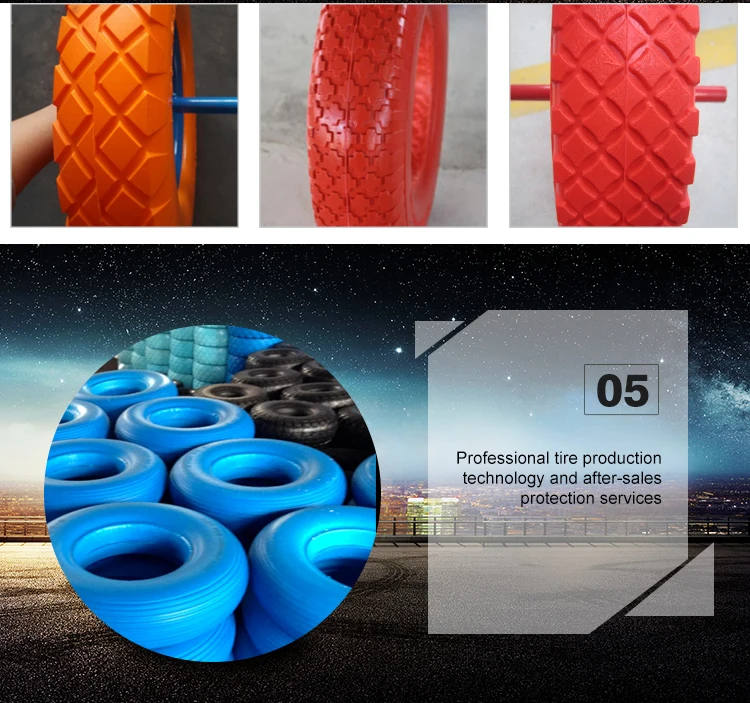
So now you know the 2 main types of foam filled tires and the differences between them. For average citizens, purchasing tires or fitting your tires with an additional layer of foam can be beneficial as it will help to reduce noise and make for a more comfortable ride without compromising drivability.
For those working on construction sites, completely filling tires with foam might be a worthwhile investment as it will help to avoid punctures and flat tires. However, this does come at a cost both financially for the initial investment as well as for the tires themselves.
We hope you enjoyed this article on can you foam fill your tires and found it informative. If you have any questions then please leave a comment below or get in touch via email or through social media and we will read and respond to every comment, email or question. Thanks for reading!
While you are able to put expanding foam in your tires, we would not recommend driving on them.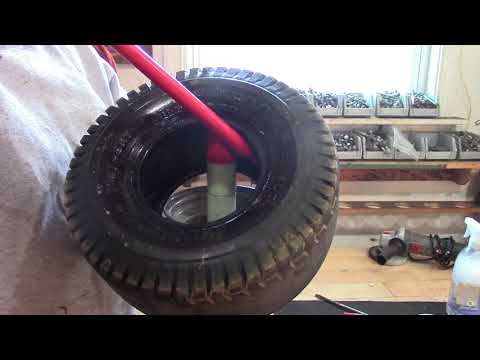 This is because road tires are designed to be filled with air and filling them with expanding foam will cause your vehicle to handle and react in an unpredictable and unsafe manner.
This is because road tires are designed to be filled with air and filling them with expanding foam will cause your vehicle to handle and react in an unpredictable and unsafe manner.
The polyurethane foam found inside tires is specially designed and cut to a very specific size to ensure that it fits properly and is then able to adhere to the inside of your tire.
While it is possible for you to DIY this, you will still need specialist machinery to mount the tire to your wheel. For this reason, we would still advise having a shop carry out the work for you.
Jump to

US Markets Loading... H M S In the news
Chevron iconIt indicates an expandable section or menu, or sometimes previous / next navigation options. HOMEPAGETransportation
Save Article IconA bookmarkShare iconAn curved arrow pointing right. Read in app
Thanks for signing up!
Access your favorite topics in a personalized feed while you're on the go.
Following is a transcript of the video.
Narrator: This is a tire technician disassembling what's known as a foam-filled tire. It's a grueling process, but an important one for these special kinds of tires once their tread has worn off. The extra work is apparently worth it, because foam-filled tires come with special benefits and capabilities that companies are willing to pay thousands of dollars more for than air-filled tires. So, how exactly are foam-filled tires made?
Tire Doctor: So, foam-filled tires are basically the exact same thing as air tires. They just have a heavy-duty compound called urethane in them that gets injected through a hose. You let it sit over three to four days, and that's called the curing process.
They just have a heavy-duty compound called urethane in them that gets injected through a hose. You let it sit over three to four days, and that's called the curing process.
Narrator: Once the liquid urethane has hardened and manufacturers are sure that the tire is absent of any air, they're ready to go. So, what's the point of having your tires filled with dense foam instead of air? If you're a construction company working on a site covered in loose nails and debris, foam-filled tires that can't go flat are exactly what you need.
Tire Doctor: So, companies will usually do foam-filled tires if they don't want any downtime, because downtime is very expensive for certain customers. Basically what downtime means is if you get a flat because you have an air tire, then you're unable to move that unit until a tire guy like me comes along and fixes it.
Narrator: Besides being impervious to punctures, foam-filled tires provide construction trucks with a softer ride because of the consistent PSI in each tire, and they add extra weight for the more difficult tasks.
Tire Doctor: So, foam-filled tires can also act as a ballast. So, basically, if you are lifting really heavy things, like really heavy rocks, it can stop you from tilting forward. Or if you're rolling one of those big rollers, you put on foam-filled tires, and it adds maybe 1,000 to 2,000 pounds, even more depending on the tire size.
Narrator: But don't get confused. These tires are not made for your full-size pickup or off-road SUV. The speed of passenger vehicles would make the foam melt, and the weight of the tires alone could send you veering off the road and destroy your suspension.
Tire Doctor: So, there's a lot of controversy between if something on the highway can actually have foam-filled tires. A lot of people ask me that kind of thing, like, "Can I put foam-filled tires on my car?" And it's definitely a no. Typically, foam-filled tires are used for low-speed vehicles like construction units, like a skid steer or a loader.
Narrator: Still, it's hard not to envy the idea of tires that can't go flat. That's why the construction companies that use them have to pay so much, between the amount of labor and liquid urethane filling they involve.
Tire Doctor: So, you're usually going to have to pay two to three times more per tire. And you also have to purchase a new tire as soon as you want foam, because if you start to put a used tire on, it doesn't really make the cost worth it. So, say, a smaller tire, it would usually be worth up to $1,000 per tire. And then for the higher-end tires, like the big mining trucks or anything like that that you see in the quarries, it's going to be upwards of, I would say, $5,000 to $10,000 per tire.
Narrator: These extra-expensive construction tires last the same amount of time as regular air-filled ones, if not longer, before their tread wears off. Even so, the time eventually comes when foam-filled tires need to be disassembled. Videos of tire technicians tearing them apart at the end of their life span have become popular online, but this fun-to-watch process isn't the typical way it's done.
Videos of tire technicians tearing them apart at the end of their life span have become popular online, but this fun-to-watch process isn't the typical way it's done.
Tire Doctor: So, we can bring it in to, say, the people that foam-fill our tires, and they can take it off with a machine, which is way easier, saves a ton of time. But what we do for our customers is we actually do it manually. And it's really labor-intensive, that's for sure. I'm a little too skinny to do that job. My brother has got to do that one. But the reason why we do this is because it saves our customers a couple hundred dollars here and there. Maybe for four tires, it would cost $500 or $600. And instead, we will charge our customers $250. 'Cause it is a family business, so it helps us out a little bit, and it also helps our customers out, so that's why it's good to hire family businesses.
Read next
Over time, any villager and summer resident gets a lot of various wheeled vehicles that require constant attention and care, including the repair of pneumatic tires and their regular inflation.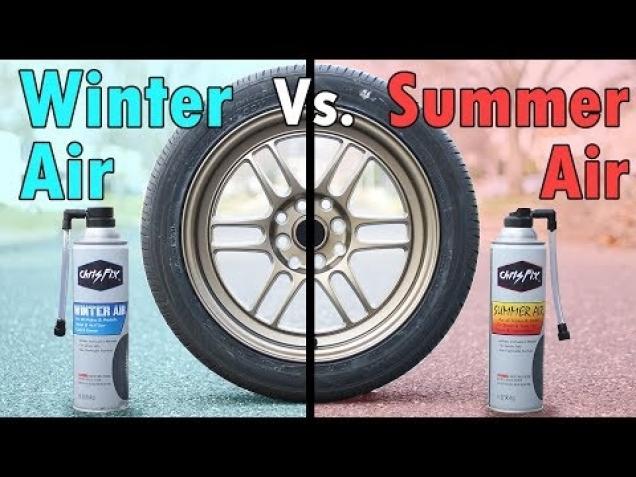 And it often happens that at the most necessary moment the wheels of turn out to be flat. And as technology ages, this happens more and more often. For example, these troubles began to haunt me constantly, and especially often in winter, in the most severe frost. And that's even worse.
And it often happens that at the most necessary moment the wheels of turn out to be flat. And as technology ages, this happens more and more often. For example, these troubles began to haunt me constantly, and especially often in winter, in the most severe frost. And that's even worse.
To fill the wheel tire with foam, you first need to drill several holes in the rim with a diameter of 10 mm ...
Finally, I got tired of it, and I solved the problem radically - I “pumped up” the tire not with air, but with polyurethane foam. I first tried filling the tire with foam through the nipple hole. It turned out, but not entirely successful - in some places, due to traffic jams, air sacs remained unfilled with foam. In addition, a significant part of the foam from the hole of the nipple squeezed back.
But the trouble is the beginning! After trying several different options, I eventually found a way to fill the tire with foam without plugs or air pockets. To do this, I drilled several holes 010 mm around the circumference of the wheel disk in such a way that the tube from the foam can freely enter into them. Before starting to fill the tire with foam, it is necessary to prepare several wooden plugs-pegs (according to the number of drilled holes in the disk), which should fit tightly into these holes and prevent the foam from breaking free.
To do this, I drilled several holes 010 mm around the circumference of the wheel disk in such a way that the tube from the foam can freely enter into them. Before starting to fill the tire with foam, it is necessary to prepare several wooden plugs-pegs (according to the number of drilled holes in the disk), which should fit tightly into these holes and prevent the foam from breaking free.
Insert the canister tube into any of the holes drilled in the disk and start the foam supply.
As soon as the first traces of foam that have reached it appear in the adjacent hole, we stop the supply from the can and immediately plug the first hole of the plugs tightly with a peg. After that, you can start feeding foam into the next hole. Then to the next...
In the same way, you can fill the tires of any other wheeled equipment, such as a garden cart, with foam.
Fill the tire with foam as follows. We insert the tube of the can into any of the holes drilled in the disk and start the flow of foam. As soon as the first traces of the foam that has reached it appear in the adjacent hole, we stop the supply from the can and immediately plug the first hole tightly with a peg. After that, you can start feeding foam into the next hole. Then to the next. The last hole, as a rule, no longer needs to be foamed, and as soon as foam appears from it, you just need to plug it with a peg plug. With this sequence of filling, air sacs usually do not remain.
As soon as the first traces of the foam that has reached it appear in the adjacent hole, we stop the supply from the can and immediately plug the first hole tightly with a peg. After that, you can start feeding foam into the next hole. Then to the next. The last hole, as a rule, no longer needs to be foamed, and as soon as foam appears from it, you just need to plug it with a peg plug. With this sequence of filling, air sacs usually do not remain.
The process of self-vulcanization of the foam inside the tire - in a closed volume without air access - takes a little longer than under normal conditions. The operation of foam-filled wheels can be started no earlier than in a day. And with a large volume of tires, it is better to wait at least two days.
I have been using this technology for filling tires with foam for more than 10 years, and the first foamed tire is still working properly today, although I use it without any discounts both in winter and in summer. For several years, one of the wheels of my old truck was filled with foam.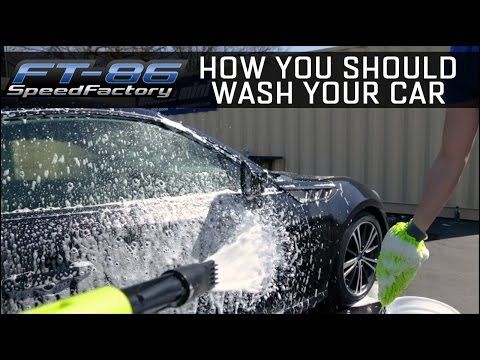 It no longer made sense to repair this wheel in the traditional way, and after filling it with foam, I drove it for quite some time, however, at low speed and for short distances, mainly in the village. The motorcycle that I use for trips to the forest for mushrooms has been running on foam tires for many years.
It no longer made sense to repair this wheel in the traditional way, and after filling it with foam, I drove it for quite some time, however, at low speed and for short distances, mainly in the village. The motorcycle that I use for trips to the forest for mushrooms has been running on foam tires for many years.
Initially, I had doubts about the durability of tires filled with foam, but over the years I have become convinced that without air access, the foam does not break down at all and serves reliably, especially where high speeds are not needed. It is also noteworthy that lugs can be easily fixed on foamed wheels, and using the most common screws with nuts or screws for this. This is especially true when operating equipment in winter for driving on snow-covered roads or off-road.
Author; Vladimir Mikhailovich Legostaev0009
Rate this article:
(28 votes, average: 4. 4 out of 5)
4 out of 5)
Share with your friends!
PENA-15 is a derivative of PENA-25S6UM (Business and Business+ classes) and PENA-20S6UM4 (Standard and Business classes). The layout and architecture repeat the PENA-25 machine, and the principle "One engine - one shaft - two pumps" is borrowed from the PENA-20S6UM4 apparatus.
In the photo on the left is the PENA-15S6UM modification (from June 2016 to June 2020), and on the right is the PENA-15S6UM5R modification (in series since July 2020).
The PPU PENA-15 machine was conceived as a "light version" for those who want to buy a professional machine for constant and frequent work, but at the same time do not claim any "excesses and bells and whistles" - only the most necessary.
However, without "gadgets" it didn't work out. Therefore, today a regular installation is provided for PENA-15S6UM5R and flow heaters PPK9-04 and the flushing system for the P20V sprayer.
Before laying down a new unit, we studied the sales statistics of PENA-20 units and PPU A and B components from 2012 to 2015. The conclusion was surprising, but expected. It turned out that 2/3 of all operators use no more than half of the capabilities of a professional installation. For example, raw materials are always processed at a ratio of only 1 to 1.
And then it was decided to create a small, reliable, professional, convenient, easy-to-maintain and easy-to-use PUR spraying machine. She received the name FOAM-15S6UM .
An excursion into the history of the creation of PPU units from 1997 to 2016
The layout "a la PENA-25" in combination with the principle of open architecture and without regular tanks provide easy access to each node of the device.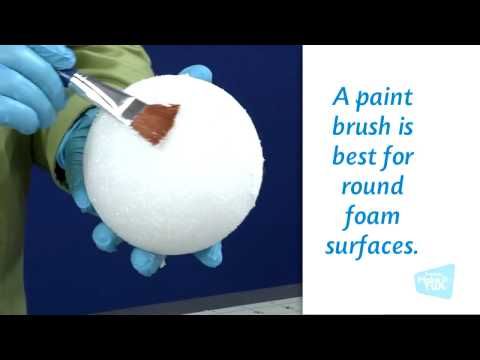 Moreover, there are no moving parts and nodes, respectively, there is no casing - everything is open, everything is in sight, everything is intuitive.
Moreover, there are no moving parts and nodes, respectively, there is no casing - everything is open, everything is in sight, everything is intuitive.
To learn more about PENA-15S6UM, we suggest watching a video from the cycle "Training to work on PENA-15 in 15 minutes". An overview of the installation, its design, main components and assemblies, and also shows how to prepare the machine for operation.
Here the PPU-15 atomizer is shown with the installation. This is a budget version of the PPU mixer. The video was filmed in 2016. Then we proceeded from the fact that buyers of the budget professional installation PENA-15 would also buy a budget pistol.
But practice has shown that this is not the case. Yes, many choose a lightweight device, realizing that 50% of the functions of top models, such as PENA-20-PPK09 / S6UM4 or PENA-25S6UM with PPK09, will never be required. But such buyers prefer an advanced atomizer - PRP-04.
But such buyers prefer an advanced atomizer - PRP-04.
Why?
Because if you plan to spray PPU professionally: a lot, often and earn money, then you should not save on the sprayer. In such cases, we recommend the PRP-04 gun: here is a video review of the PPU PRP-04 sprayer.
The pressure of components "A" and "B" in the PENA-15 lines during operation, depending on the length of the hoses and the lift height (between the pumps of the unit and the sprayer), is in the range from 7 to 15 atm. In the mixing chamber, the pressure drops and amounts to 4 ... 8 atm. Approximately with this pressure, compressed air should also be supplied to the chamber. Thus, FOAM-15 is a low-pressure apparatus for spraying polyurethane foam.
In recent years, you can often hear "High pressure is better than low." I want to buy a high pressure PPU unit. With a probability of 0.6, the one who says this has never dusted the PPU at all and draws all the information from the Internet and, often, has no idea what the price of installing a HP is.
The experience of NST since 1997 in the design, manufacture and operation of PPU units suggests that one should start mastering the technology at a low-pressure unit. FOAM-15 is great for beginners . To better understand why, we recommend that you read a detailed review on this topic at the link.
Comparison of low and high pressure units for spraying PPU ⇒
In terms of its functionality and performance characteristics, low pressure PPU PENA-15 spraying unit , depending on the operator's training level and the purposes for which it is purchased, can be classified into three price segments.
Here is a table and recommendations for the selection of the PPU device ⇒
It is easy to work on the PPU PENA-15 installation. Minimum requirements for an operator. No need to think about setting up the machine. In the previous video, it was shown how the machine tool and the pistol are brought into combat position in literally 10 minutes.
Would you like to see how the same PPU apparatus is properly rinsed and preserved during long stops?
Then fill in the feedback form here and write in the Comment field: " Video of the completion of work on PENA-15 ".
And we will send you a link for individual viewing.
And now we offer you to watch a video of how PENA-15 works directly at the facility of one of the NST clients in the Ivanovo region. In this case, we are talking about the thermal insulation of an industrial building, where there will be a workshop for the manufacture of wooden furniture.
To complete the picture, in order to make it easier and safer to make a choice in favor of the PENA-15 unit, let's compare it with the basic modifications of the PENA-20 and PENA-25 units.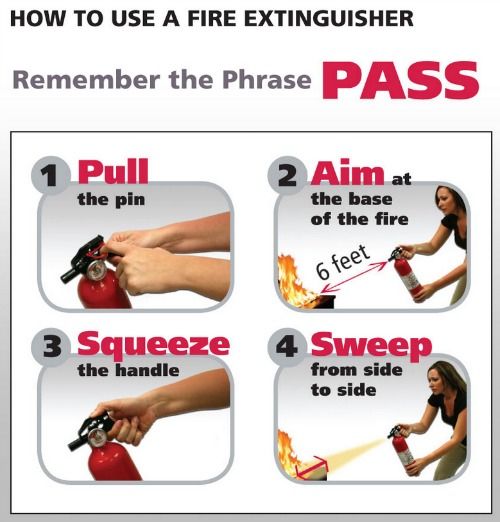
| Name of indicators | FOAM-15S6UM5R | FOAM-20S6UM4 | FOAM-25S6UM |
| Limits (min…max) of the total volumetric performance of the installation, [l/min] | 2.5 ... 5.0 | 2.0 ... 5.0 | 2.0 ... 6.0 |
| Use for foam spraying | Yes | Yes | Yes |
| Filling with PPU voids and cavities of building structures | Yes | Yes | Yes |
| Manufacture of molded products from rigid and flexible polyurethane foam | No | Hard - Yes. From elastic - No. | Yes |
| Discrete adjustment of the volume ratio "Polyol" (A): "Isocyanate" (B) | No. | In the range of 0.9:1 to 0.9:1.7 in steps of 0.1 to "B" | In the range from 1:1 to 1:1.7 in steps of 0.1 to "B" |
| Smooth electronic adjustment of the volume ratio "Polyol" (A) : "Isocyanate" (B) | No | No | Yes. In the range from 3:1 to 1:3 |
| Gear pumps, special dosing for pumping chemically aggressive liquids | Two Si6X2T | Two Si6ITS | Two Si6ITS |
| Check valves at pump outlets | No | Yes | Yes |
| Power of asynchronous motor-reducer, [kW] | 0.75 | 0.75 | Two by 0.37 |
| Heating of components, incl. electronic control panel | Additional option PPK-09MS, 2x1.5 kW | Additional option PPK-09MS, 2x1.5 kW | Standard for 2015 model |
| Spray gun flush | Additional option P20V, 1. 4kW 4kW | Standard for PENA-20V/S6UM4 installation | Additional option P20V, 1.4kW |
| Power base model / with all options options, [kW] | 0.75 / 5.15 | 0.75 / 5.15 | 0.74 / 5.14 |
| Supply voltage*, [V] | 220 | 220 | 220 |
| Separate switching of pumps | No | Yes, by lifting open gear idle gear | Yes, from the control panel. |
| Scheduled timer operation | No, the PU2T** unit is not connected to this model | Yes, if you install the block PU2T | Yes, if you install the block PU2T |
| Emergency shutdown of engines in case of maximum increase in pressure in pressure hoses | No | Yes | Yes |
| Automatic start/stop of motors if atomizer shutter opens/closes | No, the PU2T unit is not connected to this model | Yes, if you install the block PU2T | Yes, if you install the block PU2T |
| Flow sensor for component "A" | No, the PU2T unit is not connected to this model | Yes, if you install the block PU2T | Yes, if you install the block PU2T |
| Length of pressure hoses: basic / maximum, [m] | 10 / 20 | 10 / 30 | 10 / 30 |
| Dimensions: Length x Width x Height, [mm] | 1150x550x950 | 1150x550x950 | 477x500x960 |
| Weight (without accessories), [kg] | 68 | 98 | 79 |
* When using additional options (heating, flushing), each of them is connected to a 220V network separately from the unit.
** Block PU2T for controlling the filling time, pressure and consumption of components. Details about this device, which is not connected to the PENA-15 unit, but can be installed on the PENA-20 and PENA-25, are described in the article about the advanced features of the PENA25S6UM installation with the PU2T unit.
Dimensions and weight of the PENA-15 unit are small. The device is easily transported in the trunk of a car and easily moved on a construction site, passes through doorways, into an elevator.
The device PENA-15S6UM is equipped with a real industrial asynchronous motor. This is important if you plan to work a lot and often, without thinking about the length of the hoses and the lift height of the components.
For PENA-15, the nominal supply of pumps along lines A and B is the same: 1 to 1. We take into account that the permissible (factory) error of the pumps is 5%. Therefore, the pumps are first tested (in oil) at the stand, the performance of each is determined. And then pairs of pumps are selected so that the actual performance of the blue pump (along line A) matches or is within 2% of the actual performance of the red pump (for isocyanate).
And then pairs of pumps are selected so that the actual performance of the blue pump (along line A) matches or is within 2% of the actual performance of the red pump (for isocyanate).
Do you need to clarify anything about the design or performance characteristics of the PENA-15 unit? Need help comparing and choosing the best PUR installation? Get professional advice from the best experts in the industry.
+7 965 250-11-26, there is Telegram, Viber, WhatsApp, Imo.im
8 800 250-11-05 (toll-free for Russia)
 910 m. If this is not enough, then you can always buy the following from us:
910 m. If this is not enough, then you can always buy the following from us: In addition to the PENA-15 machine, it is recommended to use flow heaters PPK-09. This device eliminates the need for intermediate small-volume containers for heating the Pol (A) and Iso (B) components.
The usefulness of this option is hard not to understand or underestimate if the PUF insulation is planned outside the warm season or if water-based PUF components are to be used.
PENA-15 suction nozzles are lowered into the factory container, liquids enter the pumps, from there - into the heating cylinders of the flow heaters. PPK-09 at a capacity of 4 kg / min allows you to raise the temperature of the raw material by +15 degrees C.
Control and management of heating or cooling of components is carried out through the electronic control panel PPK-09, which displays information on each of the heating elements.
Smooth adjustment of the engine speed is carried out by a Hitachi frequency converter installed in the right compartment of the control panel. The inverter allows you to change the operating frequency of the engine from 25 Hz to 75 Hz, as a result of which the total supply of the pumps varies from 2.5 liters to 5.0 liters of a mixture of liquid components "A" and "B" in 1 minute.
This option allows the operator to choose the optimal performance of the PPU machine in order to process a particular surface. If there is a smooth smooth wall or dust on the floor or ceiling, then the feed can be set more. If applied to a curved surface (pipe, tank, dome, etc.), then it is better to reduce the flow. Etc. An experienced duster knows well where the torch needs to be reduced, and where more can be done.
When adjusting the supply of pumps with a frequency converter, you should also keep in mind the air consumption: the greater the supply of liquid components to the mixing chamber of the atomizer, the more compressed air is required to mix them. And vice versa.
And vice versa.
Also, do not forget that with the PPU gun model PRP-04 there are 3 nozzle nozzles in the kit: round 4mm, round 6mm and slit-like. The cross-sectional area of the slot-shaped nozzle hole is 4.5 mm. The slotted nozzle is universal. It can also be used with 2.5l and 5l/min. But round nozzles are recommended to be changed, depending on the performance:
The warranty for the PENA-15 unit is 12 months from the date of commissioning, which (according to the terms of the contract) must take place within two months from the date of shipment from the warehouse NST-Moscow or NST- Vladimir or from the warehouses of NST distributors in Russia and the EAEU:
NST St. Petersburg, +7 (921) 333-80-04, Danila or Oleg
NST Ekaterinburg, +7 (922) 219-09-26, Anatoly
NST Novosibirsk, +7 (383) 201-26-19, Alexander
NST Krasnoyarsk, +7 (391) 271-71-27, Maxim, Nikita, Roman, Anton
NST Vladivostok, +7 (902) 480-78-18, Victor
NST Kazakhstan Nur-Sultan (Astana) , +7 (7172) 64-20-51, Nikolay
NST Kazakhstan Petropavlovsk, +7 (7152) 63-20-51, Eugene
passports and technological regulations NST for PPU technology.
In order not to make a mistake and then not to look for someone to blame, so that the equipment will serve faithfully for a long time, we strongly recommend that you perform commissioning under the video control of our technical department.
All you need is to make a video call, switch your phone to the front camera and speakerphone, so that our specialist can see and hear everything that happens near the installation.
You can also learn how to operate the unit before it is shipped from the NST warehouse. In this case, the device that is paid for is launched. In order not to dirty the sleeves and the spray gun, used hoses are connected to the station and a gun from the NST test site is used.
As a rule, it takes 2 hours for the trainees to get an excellent idea of how the apparatus works, what are the nuances and features of the technology, how to select components A and B, and much more. "Cadets" independently spray PPU on their FOAM-15.
All used hoses are then dismantled and the pumps are preserved (filled with oil) so that the machine can be started even after a long period of inactivity. The device is packed in a polyethylene film and handed over to the customer.
The device is packed in a polyethylene film and handed over to the customer.
It is strongly recommended that trained people who have at least a minimum knowledge of PSP come to the training. To have a prepared list of questions. The more they ask at such a seminar, the more we tell, the more and better you will learn about PSP and get a real picture.
Studying at NST allows you to see with your own eyes, hear with your own ears and try with your own hands.
NST has produced PPU units since 1997. The reputation and name of NST is a guarantee of product quality. NST does not need to sell the PPU device to the client at any cost. HST is important so that the installation works for many years, and does not stand idle.
NST helps customers with orders. We send them requests for PPU insulation from the nearest cities. NST knows a lot about polyurethane foam, if not everything, then a lot.